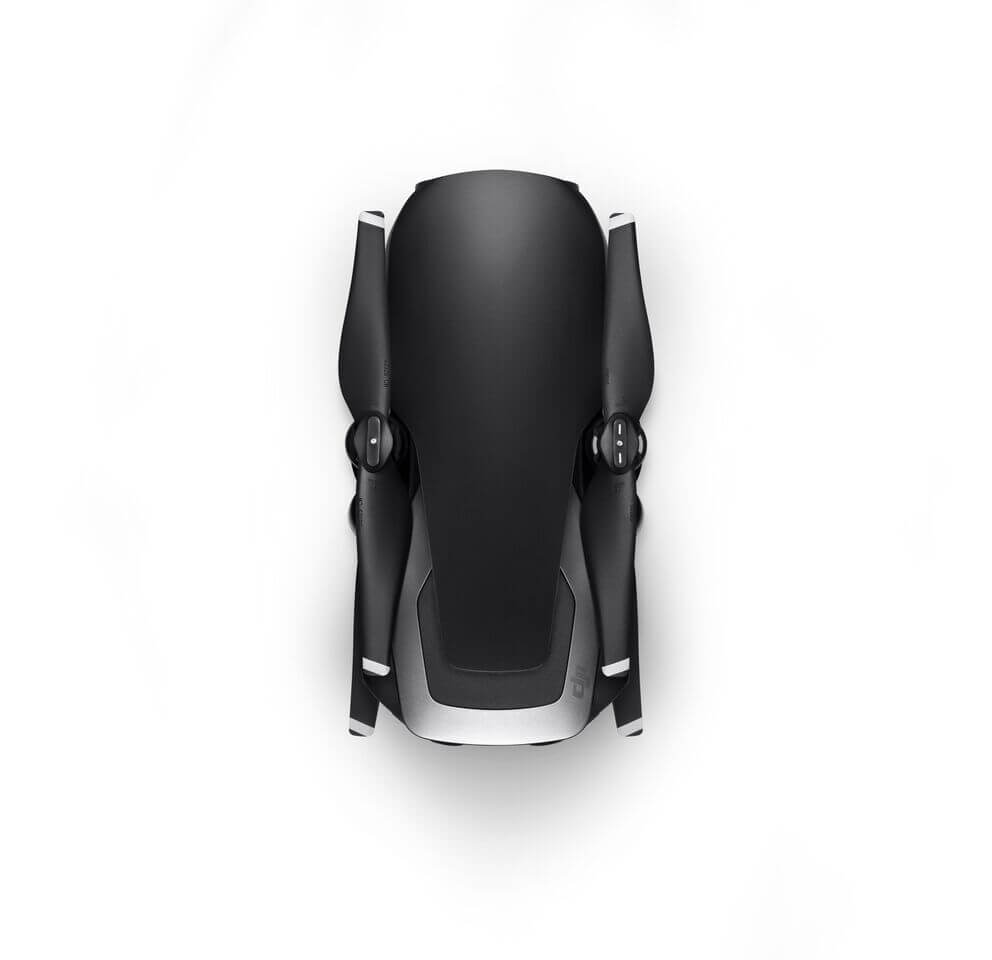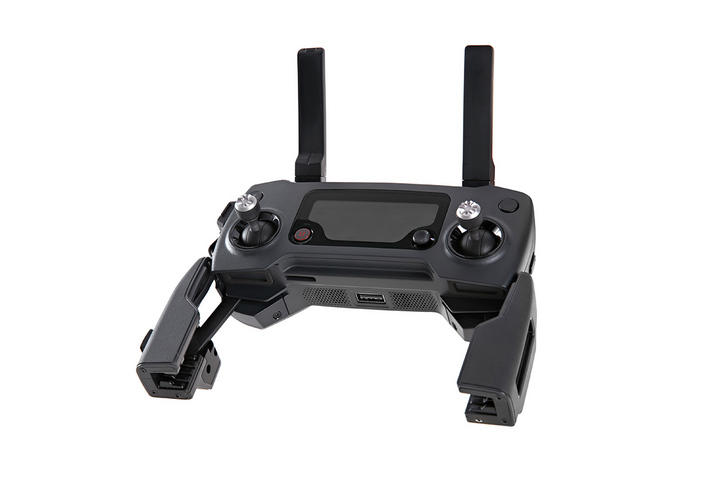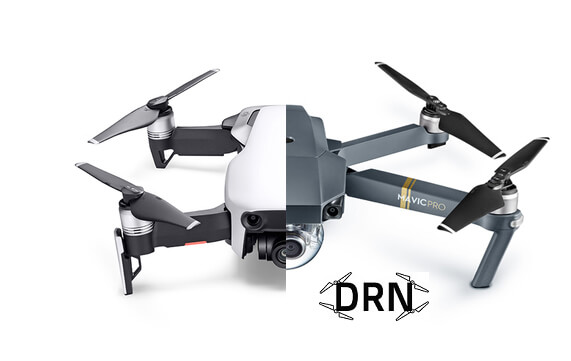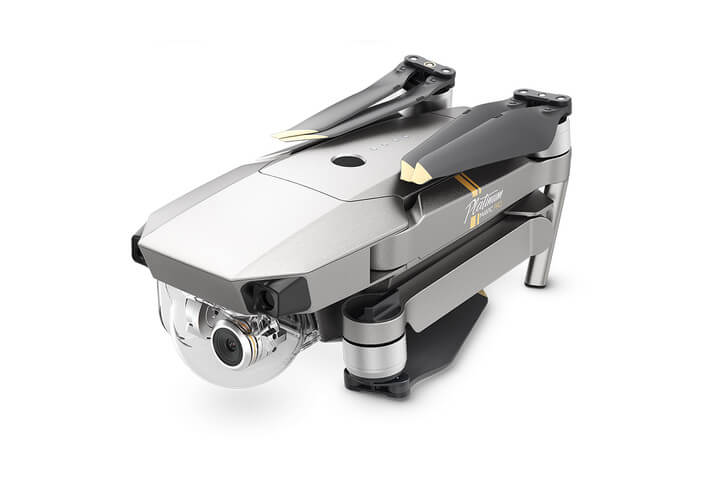One of the hardest choices in life is deciding between two similar, but not easily comparable outcomes.
Lease or buy?
Own or rent?
Until a more substantive DJI rumor like the Phantom 4 V2.0, Phantom 5 or Mavic Pro II (2) is real, we thought we’d wade into the debate between the two Mavic drones and share some key insights that might help you decide which folding, 4K drone is right for you.

After all, they’re incredibly similar and yet amazingly different. And at the end of the day we want to help you find the right drone. If you’re the “readers digest” type, you can evaluate the differences between the Mavic Pro and Mavic Air quickly and easily using DJI’s Drone Comparison Tool, which will consider much of what we discuss below.
The Mavic Pro is the first generation folding 4K drone from DJI, and it’s now over a year old and ready for a refresh. In 2017 DJi updated the Mavic Pro with smarter motor electronics and quieter props with the Mavic Pro Platinum, but you can just tell by looking at the design differences between the Pro and the Air which one is ready for a facelift.
The Mavic Pro basic kit is $200 more than the Mavic Air. If you go with the Fly More Combo, the difference is still $300 between the two drones.
While it might be easy to just try and solve the Mavic Pro vs Mavic Air equation based on price, and whether the Pro is worth $200 more, the answer is much more subtle. Each drone has qualities and features not found on the other, so deciding which one is right for you today, and which one is more future-proof, is key to making the best choice.

Flight Time
We’ll disregard the Platinum Pro in this comparison, because a 3-way report would just go around in circles.
The Mavic Pro is listed as having 27 minutes of battery life compared to 21 minutes with the Mavic Air. If you need more flight time, a Mavic Air battery ($79) is about 11% cheaper than a Mavic Pro battery ($89). Six minutes isn’t a huge difference when it comes to battery life.
Aircraft Speed
The newer, lighter and smaller Mavic Air posts a top speed in Sport Mode of 68.4 kph (42mph) beating the Mavic Pro which has a top speed of 65 kph (40mph). We’ll call this one a tie.
But in P-mode, the Mavic Pro flies up to 36 kph, far faster than the 28.8 kph speed of the Mavic Air. And this is one feature we noticed almost immediately. The first time we flew the Mavic Air we wondered if the settings had us in beginner mode as it’s “stick full forward” speed felt subdued compared to the Pro.
Portability
There’s no question that the Mavic Air is the champion here. Folded down, the Mavic Air fits easily in a jacket pocket, purse or even the smallest backpack. In fact, we love the smarts that went into the design of the Mavic Air shoulder bag. Included in the the Fly More Combo, it holds 3 batteries (plus one in the drone), tablet mount, ND Filters, iPad Mini, and Remote Control. An expandable pocket on the outside easily holds the compact charging hub.

Yes, the Mavic Pro was ground-breaking as the first (and best) foldable 4K drone. When folded, the Mavic Pro is way smaller(and smarter) than the GoPro Karma that was launched at the same time, but with arms fully extended the Mavic Pro is pretty much the same size as the Phantom 4.
Filter Use
If you’ve spent any time in the forums or facebook groups, you know that Neutral Density filters are an important component of truly cinematic drone footage. I have to say that DJI nailed it with the Mavic Air. The gimbal of the Mavic Air comes with dummy lens cover screwed onto the camera. Simply screw it off and screw on your filter.
This design means the gimbal already anticipates the weight of the filter and you won’t run into gimbal overload errors that occur with some filters on the Mavic Pro.
The Mavic Pro filters slide on, over the camera, which could be considered a less secure mount compared to the screw on feature of the Mavic Air. We’ll give this category improvement a +1 to the Air.
Photo Resolution
The Mavic Air and Mavic Pro have indentical still photo characteristics. Kinda. Each uses a 1/2.3″ CMOS sensor (although the Air has a slighty improved version of same) that produces 12 megapixel stills.
The difference you might notice between the two drones is that the Mavic Air is designed with a fixed focus lens. The Mavic Pro lens is variable focus, which means that when you’re flying you simply tap your subject on the screen to refocus the camera.
Either way, with 12 MP, no one is hitting image quality out of the park like a Phantom 4 Pro.

Video Quality
For us, video quality was one of the deciding factors why we needed the Mavic Air.
Both drones shoot 4K video. Both have a 1/2.3″ CMOS sensor. But the write speed difference between the Pro and Air is like the Grand Canyon. The Mavic Pro writes 4K video at speeds up to 60 Mbps. The Mavic Air writes 4K video to the microSD card at up to 100 Mbps.
Both drones record 4K at 24, 25 and 30 frames per second. At 1080p, the Mavic Air takes the lead again with up to 120 fps over the Mavic Pro‘s 96. Your 1080p slow motion with the Mavic Air will be butter smooth, and like the 4K footage, superior to the Mavic Pro.
It’s a simple concept, but obviously the faster the drone records video data, the more data it can record in identical recording sessions.
You’re simply going to have noticeably better 4K footage (to the trained eye) with a Mavic Air than you will with a Mavic Pro. For less money.
For some drone pilots, the camera settings of the Mavic Air will be just advanced and customizable enough for their type of filming. For others who like to work with more complexity and control when filming, the advanced settings and variable focus of the Mavic Pro will be an important point of consideration.
Idiot Proof
While we’re on the subject of photo and video quality, we have to admit there’s an idiot factor to consider between the Mavic Pro and Mavic Air.
It’s happened to us, probably to you as well. You pack up your drone. Batteries are charged. Drive to a great location to capture amazing shots that you’ve been planning in your mind well in advance.
And you forgot to put the microSD card back in the drone. Let’s just say it’s happend to me more than once.
With the Mavic Pro, you’re out of luck. Come back another day.
If you have the Mavic Air, at least you have the 8GB of on-board storage. If you’re filming in 4K you might get 11 minutes or so of video. If you decide to make the best of a bad situation, in 1080p you can capture over 30 minutes of video.
We also like the built in storage as an option to use for stills only, while we use the microSD for video only during a lengthy shoot. It makes it easier to manage a day’s production when we’re back in the office.
Obstacle Avoidance
One of the biggest complaints we’ve heard about the Mavic Pro (and there aren’t many complaints in the bigger picture) is the lack of rear sensors on the Pro. Pilots shooting video pulling back from a scene have long been frustrated by the difficulty managing a flight bath using VLOS without sensors.
Because the Mavic Air design has learned from and built upon the Mavic Pro, it has the advantage here with 3-direction obstacle avoidance over the 2-direction of the Mavic Pro.
Enhanced Flight Modes
The DJI Spark was our first introduction to flying a drone without any contoller at all. Able to launch from our palm, we could crudely control the Spark with basic gestures.
The Mavic Pro doesn’t have the brains nor eyes to be able to incorporate gesture now, or with a firmware update. But the Mavic Air built on the progress that DJI advanced with the Spark to bring a higher quality gesture experience to the Air.
Each pilot has their own habits, but gesture mode has never been our favorite. And although the Mavic Air has it, it’s not a feature that would make or break a decision for us. Your experience may be different, and that’s totally cool.
The enhanced brain and sensors on the Mavic Air also allowed DJI to create an Advanced Pilot Assistance System (APAS). Simply put, with APAS, the Mavic Air is able to sense obstacles in it’s path and intelligently design a way to bypass those obstacles in real time. The entire “Flight Autonomy 2.0” system built into the Mavic Air provides more precise hovering and better flight performance.
SmartCapture is a new setting on the Mavic Air that used to be called Gesture on the Spark. These settings allow Jedi-like control of the Mavic Air without any remote or smartphone.
When the Mavic Pro was originally released, it did not have Quickshots. In case you missed it, DJI Quickshots are pre-programmed flight modes that combine automatic flight and recording to create a specific cinematic shot. Modes like Dronie, Rocket, and Helix that originally came out with the Spark were added to the Mavic Pro in 2017. The fourth original Quickshot, Circle, is not available on the Mavic Pro.
With the launch of the Mavic Air, DJI added two additional Quickshot Modes to the four above: Boomerang and Asteroid.
With Boomerang your Mavic Air records you while making a sweeping arc behind you from one side to the other. It’s a great way to capture epic landscapes and scenes while still including you in the video. Asteroid combines a Dronie with a 360 Panorama photo to make a short clip capturing you in an amazing location.
Because the Mavic Air is almost two years newer than the Mavic Pro, it’s likely that the gains made in processing power since the Mavic Pro exclude it from achieving all of the new modes available to the Air.
At the same time, however, the Mavic Pro has other Intelligent Flight Modes not yet available on the Air. These include Fixed-wing mode, Terrian Follow, Course Lock and Home Lock. We won’t get into the details of these in this article, but DJI has shared with us in chats that further improvements to the Air (via firmware updates) is likely.
ActiveTrack, available on both the Mavic Pro and Mavic Air is also subtley different between each drone. The Mavic Air‘s advanced brain allows the ActiveTrack sensors to detect as many as 16 subjects and loyally follow one. The Mavic Pro does not entertain this level of advanced function with it’s ActiveTrack settings.

Remote Control
Some Mavic Pro users swear by the small LCD display on the Pro’s controller. Allowing you to fly more capably without the DJI GO 4 app, it definitely could have its moments for some users that make it practical.
With the Air, DJI removed the LCD screen altogether. It’s one of those take it or leave it things. Not a feature that really mattered to me either way.
But a new addition to the RC of the Air is the super handy removable joysticks. Unscrewed, they store in tight rubber grippers on the on remote and are a big reason why the Air combo is so darn compact and practical. This is a very attractive feature for me over the Mavic Pro.
Range
Talking to drone pilots about range gets you into two different conversations…those who are obsessed with it and those who don’t care at all.
The Mavic Air is rated to have a maximum range of 4km. The Mavic Pro has a maximum range of 7km. In theory, and under ideal conditions, both of these dreams can come true. In reality, very very few drone pilots will push the limits of either range. If government rules prohibiting flying beyond visual line of sight (VLOS) today don’t deter you, then ruthless enforcement that is eventually coming our way will.
We ran into lots of transmission issues with the Spark that were really confidence shaking. Not so with the Air. Although we’ve had limited opportunities to test distance, we recently did a 1.6km jaunt for kicks while inspecting the “back 40” and had zero transmission issues.
Obviously with the 7km range, the Mavic Pro is demonstrating transmission signal strength that is more robust than the Air. Considering how many Mavic Pro fly-aways we’ve read about in the forums, we would expect better real-time performance from the stronger signal.
Choosing which folding 4K drone is best for you isn’t easy. With only $200 difference between the Mavic Pro and Mavic Air, the decision really boils down to factors that are outside of the price.
If we were buying the drone today, and considering all of the features above, we would lean toward the the Mavic Air. With newer, more advanced electronics the Mavic Air is physically more ‘future proof’ than the Mavic Pro.
The features of the Mavic Air that are measurably less than the Pro (ie distance, fixed focus, and flight time) are more than made up for us with smaller form factor, rear obstacle avoidance, advanced flight modes and the likelihood of continued firmware enhancements. And with the $200 savings you can buy a fourth battery, a Class 3 microSD card, and a decent set of Neutral Density filters.

The bottom line for me, if it were today, is that the Mavic Pro product cycle is about to turn. The Pro is soon going to turn 2 years old and we’re highly confident (despite the various DJI rumors about a Mavic Pro II) that it will be updated. It may not happen until Fall 2018, but it will happen. And when it does the original Mavic Pro will see it’s next price drop and with that will be on it’s way to functional obsolescence.
Technology is making everything in our lives smaller, faster and better. And DJI drones are no different. Which is why DJI was able to pack so many competitive and improved features into the Mavic Air.
We like to our purchases to be future friendly, not discount bin clearance and lacking in features. I know the Mavic Pro isn’t there yet, but that’s where it’s headed, especially given it’s size. And even with a price drop that put it equal to the Mavic Air, I would still chose the Air over the Mavic Pro for my own reasons and preferences.
One thing that is certain, is that the debate between the Mavic Pro and Mavic Air isn’t going away any time soon. So pull up a chair, grab some popcorn and watch it take place in the comments.
For the full comparison on the technical specs of the DJI Mavic Pro and Mavic Air, click here.
If you truly have your intentions set on a Mavic Pro, we suggest you consider a Refurbished Mavic Pro from DJI. Refurbished drones come with full warranty from DJI, are eligible for DJI Care Refresh and are the same price as a Mavic Air.
Click here for details on the DJI Refurbished drone program.







Pingback: Droneless Summer: Don't Let DJI Mavic 2 Delay Keep You Sidelined